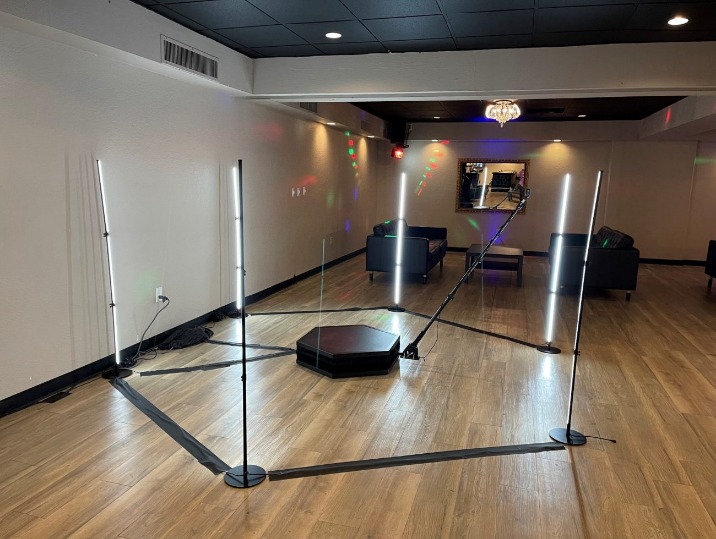So, you think you know Japan? You’ve binge-watched the anime, you’ve mastered the art of slurping ramen (in theory, at least), and you’ve got a strong opinion on which purikura booth gives you the best sparkle-eye effect. But living here, or even just understanding daily life from the outside, is a whole other game. It’s a beautiful, frustrating, and utterly fascinating place where ancient tradition and hyper-modernity exist in a kind of chaotic harmony. Let’s chat about the real Japan—the one you experience between the temple visits and sushi trains.
The Konbini: Your New Best Friend and Life Support System
Forget Mount Fuji. The true heart of Japan is the humble konbini—the convenience store. A 7-Eleven, FamilyMart, or Lawson isn’t just a place to grab a dodgy hot dog; it’s a multifaceted institution. It’s your bank (ATM), your post office, your printer, your bill-payment center, your ticket vendor, and, most importantly, your culinary savior.
Where else in the world can you get a genuinely delicious, cheap, and nutritious meal at 11 PM? The onigiri (rice balls) are a work of art—perfectly formed triangles of rice hiding treasures like umeboshi (pickled plum) or salmon, wrapped in nori that somehow stays crisp until you tear the plastic strip. The fried chicken? Legendary. The sandwiches, with their crustless, fluffy white bread and surprisingly refined egg salad or potato salad fillings? Iconic. The constant seasonal rotation of desserts and snacks means there’s always a new limited-edition KitKat or melon-flavored something to try. Life in Japan without konbini is unthinkable. It’s the unsung hero that keeps the country running.
The Art of the Sideways “No”
Communication in Japan is often less about what is said and more about what is *not* said. Direct refusal is considered jarringly rude. So, how do you say “no” without ever uttering the word? You become a master of the subtle, the vague, and the wonderfully indirect.
You’ll hear phrases like “chotto…” which literally means “a little,” but contextually translates to “That is a magnificent idea you have there, but it would be easier to summon a meteor to Earth than for me to make that happen.” It’s a soft, non-confrontational cushion that prevents anyone from losing face. Understanding this is key. That long, thoughtful inhale through clenched teeth followed by a “sou desu ne…” (“well, you see…”) is a hard pass. It’s not deceitful; it’s considerate. It’s a social dance where everyone agrees not to step on each other’s toes, and once you learn the steps, it’s actually pretty graceful.
Fashion: From Urahara to Ginza
Japanese pop culture and fashion are a beast with many, many heads. It’s not just kimonos and Harajuku girls (though they are a vibrant part of it). The fashion sense here is deeply contextual. You have the salaryman in his uniform of a dark suit and tie, a symbol of conformity and dedication. Then, just a few train stops away, you have the kids in Harajuku sporting layers of lace and decora style, or the minimalist, architectural designs in Omotesando.
What’s fascinating is the sheer commitment to the bit. Whether it’s the elegant, understated aesthetic of a woman in a timeless trench coat or a guy dressed head-to-toe in vintage Americana workwear, the outfit is often worn with intention and completeness. Fashion is treated as a hobby, an art form, and a personal statement all at once. There’s a tribe and a style for everyone, and each one is executed with a level of seriousness that is honestly inspiring.
The Pursuit of Atsui and Tsumetai
Japan has a deep, spiritual relationship with temperature. This isn’t just about air conditioning versus heating. It’s about the ceremonial embrace of the seasonal extreme. In the dead of winter, you will see groups of people gathered around outdoor stalls devouring steaming bowls of oden (a simmered pot dish) or roasted sweet potatoes, their breath visible in the cold air. The heat of the food is part of the experience, a weapon against the chill.
Conversely, the peak of the humid, oppressive summer is met with a barrage of *tsumetai* (cold) delights. Kakigōri, shaved ice topped with elaborate syrups and condensed milk, becomes a religion. Cold noodles like soumen or zaru soba are consumed with relish. There’s an understanding that to truly appreciate the cool, you must first endure the heat. It’s a collective, national mood that shifts with the seasons, and the food, drinks, and activities all pivot to accommodate it.
The Paradox of Work and Play
Yes, the notorious Japanese work culture is real. The image of salarymen working long hours and missing the last train home is a stereotype for a reason. But what’s less often discussed is the intensity with which Japan plays. When the work is done (or sometimes even when it’s not), the release valve is opened wide.
Izakaya (Japanese pubs) erupt with laughter and the clinking of beer glasses. Karaoke boxes host heartfelt, off-key renditions of enka ballads and J-pop hits. During hanami (cherry blossom viewing) season, parks are packed with people partying under the fleeting pink flowers. There’s a sense that leisure isn’t just passive relaxation; it’s an active, scheduled, and enthusiastically pursued event. The balance might seem off to an outsider, but the commitment to both extremes is a defining feature of life here. For more nuanced takes on these daily rhythms and cultural quirks, the Nanjtimes news and stories often captures this vibe perfectly.
It’s the Little Things
Ultimately, falling in love with Japan happens in the small, quiet moments. It’s the precise, polite way a department store clerk handles your purchase, wrapping it like a priceless artifact. It’s the eerie quiet of a morning commuter train. It’s the sudden, breathtaking beauty of a tiny shrine tucked between two skyscrapers. It’s the shared, unspoken understanding that public spaces are to be respected and kept impeccably clean—yes, even during a massive music festival.
It’s a society built on a million tiny considerations for others. It can feel restrictive at first, all these unwritten rules. But once you settle into the rhythm, you start to see it not as a restriction, but as a framework that allows everyone to coexist peacefully in a very crowded space. It’s weird, it’s wonderful, and it absolutely works. And that’s the real secret they don’t put in the guidebooks.





